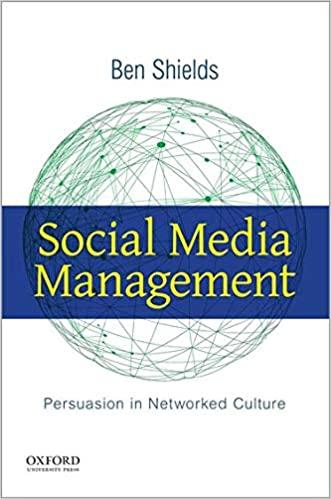Answered step by step
Verified Expert Solution
Question
1 Approved Answer
charitable cause. Sass Brown, dean of Dubai Institute of Design and Innovation, said, The fact that Burberry destroys stock is not a surprising revelation for
charitable cause. Sass Brown, dean of Dubai Institute of Design and
Innovation, said, The fact that Burberry destroys stock is not a surprising
revelation for those with knowledge of the industry. This has been a longtime
practice to ensure the exclusivity of product. Unfortunately, big brands
like Burberry are locked into a broken system, part of which is financial. As
a publicly traded company, it is expected to show continuous growth on a
quarterly basis. But how can a brand show constant and consistent growth
on a finite planet, despite financial downturns, material scarcity, changing
weather patterns and a host of other market realities?
On September Burberry announced that it would stop the exercise
of burning unsold goods, with immediate effect. It also said it would stop
using real fur in its products, and would remove existing fur items. Burberry
had been using rabbit, fox, mink, and Asiatic racoon fur in its collections,
but it pledged to stop using them in the future.
After the stock burning fiasco, Burberry initiated different programs to
project the image of an ethical company and took several steps for the
purpose. Burberry said it was working with the sustainable luxury company
Elvis & Kresse to renovate tonnes of leather offcuts into new products
by It planned to increase efforts to reuse, repair, donate, or recycle its
products and work to cultivate new sustainable resources.
Questions:
times
Discuss how controversies affect businesses.
Evaluate the methods by which companies can practice sustainable
inventory management.
Discuss how luxury fashion companies can resort to sustainable
practices to manage their surplus stock.
Analyze the importance of ethical decision making in business.On September UKbased luxury fashion giant Burberry Group PLC
Burberry announced that it would stop burning unsold clothes after it
came in for severe criticism from industry analysts, environmentalists and
consumers for resorting to such a practice. Burberry's annusl report,
released in June said, "The cost of finished goods physically destroyed
in the year was million about US$ million including
million of dertruction for beauty inventory." The total value of goods
destroyed by the label since was & million.
Burberry announced that goods including clothes, accessories, and perfume
had been burned. However, it claimed that they had been destroyed not to
maintain exclusivity but to prevent counterfeiting. Burberry was founded in
by Thomas Burberry Thomas who opened a clothing store in
Basingstoke, Hampshire, England See Exhibit I By the business had
started focussing on the growth of outdoor clothing. Being a sportsman,
Thomas was unhappy with the then popular rubberized waterproof raincost,
which was heavy, confining, and hot, and thus unfit for long outings. In
Burberry introduced 'gabardine', a firmly woven fabric made from
water proof linen or cotton yarn. Although tough and tesrresistant, thir
cloth was lightweight and allowed air to circulate, malking the cost made of
it more comfortable than the heavy raincost.
In Burberry faced a huge challenge as its signature collection of
garments was being widely imitated by chesp, mock brands, malcing luxury
consumers feel that their luxurious clothing was similar to what worlcing
class youngaters were wearing. Burberry had witnessed a growing trend of
'chavs' wearing its trademark camel check clothing. Retailers who stoclced
Burberry merchandice felt that there was a rising negative association with
the brand among people of high social status.
According to experts, destroying unsold stock was a technique commonly
used by luxury houses to maintain a shortage of their goods and the
uniqueness of their brands. In Italy and many other countries, these
companies could also claim a tax credit for destroying inventory. Luxury
brands like Chanel SA and Louis Vuitton Malletier too had recorted to the
practice.
Many analysts, environmentalists, and customers criticized Burberry for
destroying the products instead of placing them on sale or giving them to a

Step by Step Solution
There are 3 Steps involved in it
Step: 1

Get Instant Access to Expert-Tailored Solutions
See step-by-step solutions with expert insights and AI powered tools for academic success
Step: 2

Step: 3

Ace Your Homework with AI
Get the answers you need in no time with our AI-driven, step-by-step assistance
Get Started


